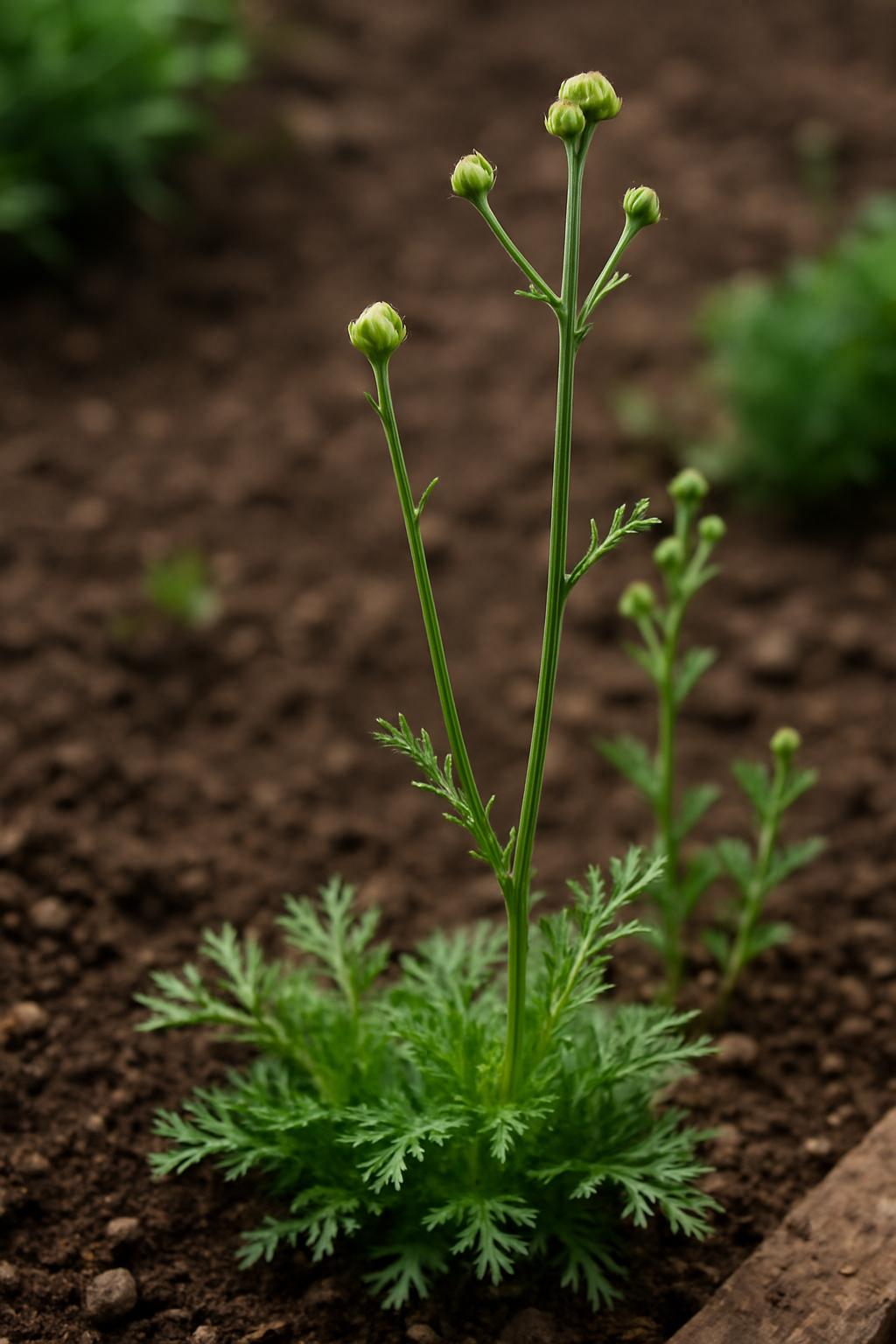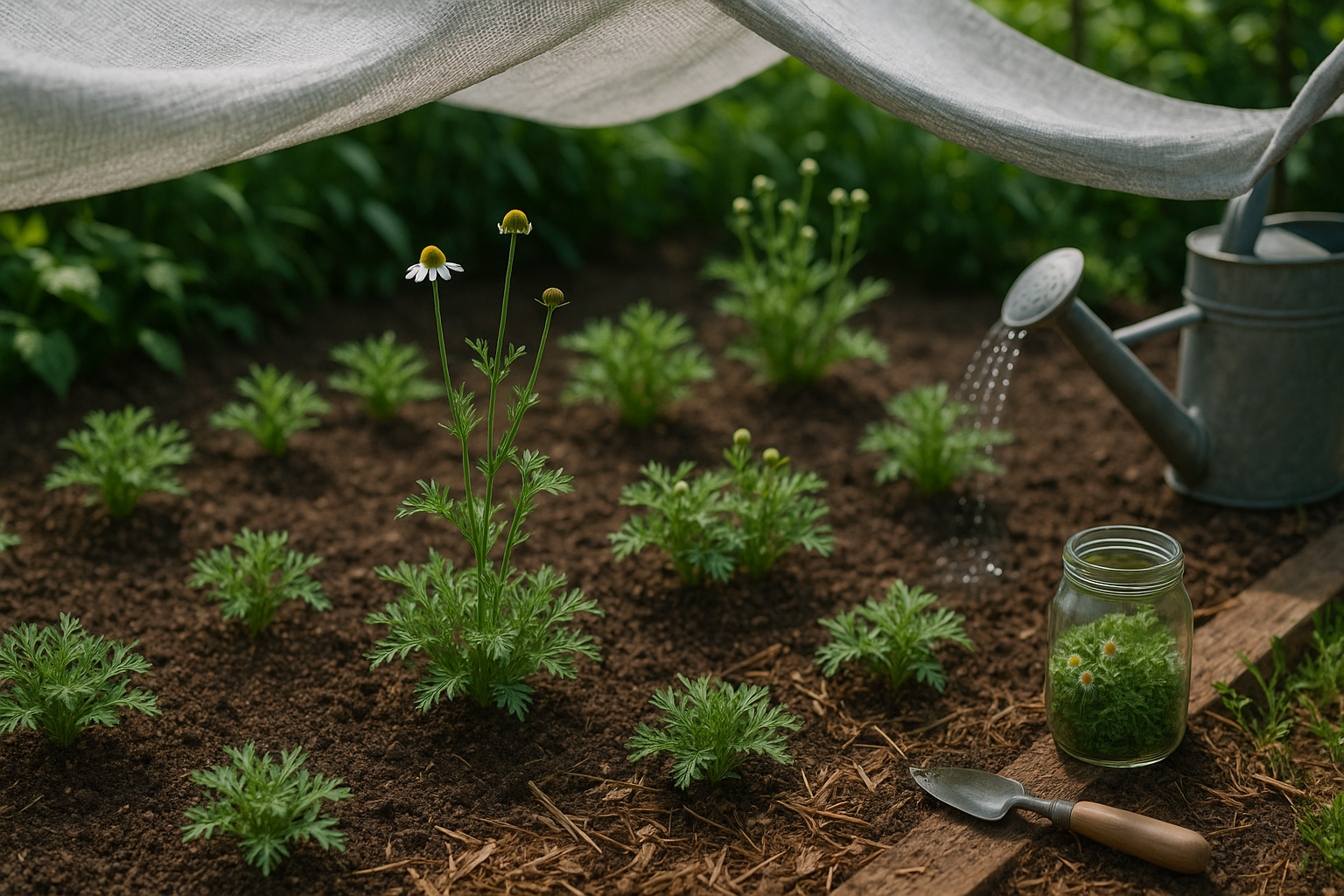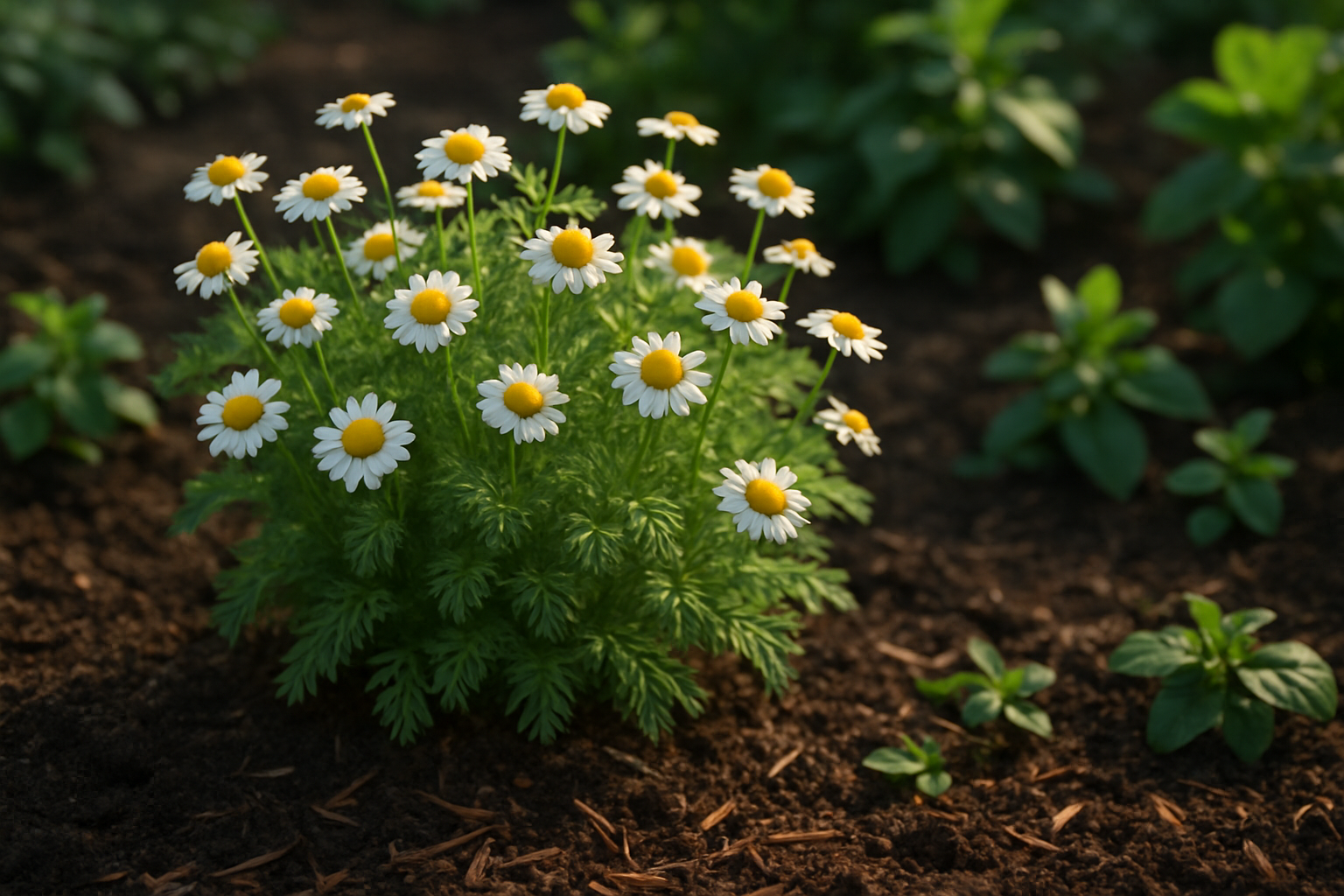Understanding Chamomile Bolting and Early Seeding

Bolting in chamomile refers to the sudden, premature rush to flower and produce seeds before the plant has fully matured. This rapid shift often catches gardeners off guard, as their carefully nurtured plants quickly transition from leafy growth to flowering stems, cutting short the ideal window for harvesting the soft, aromatic leaves and blooms.
Early bolting leads to a reduced harvest and can significantly weaken the flavor and potency of the flowers, which is frustrating for anyone hoping to use chamomile for tea, skincare, or other herbal remedies.
German chamomile, an annual, is generally more prone to bolting than the perennial Roman chamomile, especially when exposed to stress like sudden temperature swings, crowded roots, drought, or excess nitrogen. Roman chamomile tends to be more stable, producing flowers steadily and with less urgency, while German chamomile can quickly shift from vegetative growth to seed production if the environment isn’t optimal.
Signs That Chamomile Is About to Bolt
- Noticeable elongation of stems
- Rapid development of flower buds at the top of the plant
- Leaves becoming smaller or sparser toward the base
- A lighter, leggier appearance as the plant diverts energy into seed-making rather than lush foliage
Spotting these signals early allows gardeners to harvest more before the plant shifts its focus, preserving both yield and quality for teas or crafts.
Causes of Early Bolting in Chamomile
Early bolting in chamomile—when plants go to seed before producing a lush harvest of blooms—can be frustrating for gardeners. Understanding the causes, however, can help you prevent it. Environmental conditions are a major trigger: sudden spikes in temperature, prolonged heat waves, and long daylight hours all signal to chamomile that it’s time to reproduce, fast-tracking the plant’s life cycle. This is especially common in late spring and summer, so planting chamomile when temperatures are consistently mild can help.
Stress factors in the garden can also accelerate bolting. Overcrowded beds force plants to compete for light, nutrients, and water, making chamomile more likely to “panic” and bolt early. Poor soil—low in organic matter or nutrients—can add to plant stress, as can inconsistent watering. If your garden experiences drought, the lack of moisture may cause chamomile to bolt, thinking it won’t survive much longer. Providing chamomile with the right conditions—ample space, well-drained fertile soil, and regular watering—greatly reduces stress-induced bolting.
Genetics play an important role as well; some chamomile varieties naturally resist bolting better than others. Before planting, research cultivars known for their resilience, such as Roman chamomile, which bolts less readily than some fast-flowering German types.
Finally, timing matters: sowing chamomile seeds too early, when the weather is still cool but days rapidly lengthen, or too late, when heat stress looms, both increase the risk of premature bolting. Check local calendars for the best planting window, and aim for periods with moderate temperatures and steady day length.
With a little planning—choosing the right timeframe, variety, and growing conditions—you can minimize early bolting and enjoy fuller chamomile blooms throughout the season.
Preventing Chamomile from Bolting Too Soon

If you want to keep your chamomile plants from bolting too soon, a few simple steps can make a big difference. Start by sowing seeds at the right time—early spring or fall usually works best, depending on your local climate. Avoid the peak of summer when high temperatures can trigger early flowering.
Give your plants enough room to breathe by spacing them about 8-12 inches apart, which helps air circulation and keeps them healthier overall. Chamomile prefers consistently moist but not soggy soil, so water deeply once or twice a week instead of shallow, frequent watering that can stress the roots.
Adding a layer of organic mulch, like straw or shredded leaves, helps retain soil moisture and keep the roots cool, which also discourages premature bolting. For added protection during hot spells, provide partial shade—using a lightweight shade cloth or moving container plants to a cooler spot can work wonders when a heatwave hits.
Don’t forget about the soil: chamomile thrives in well-draining, fertile soil, so mix in a bit of compost before planting and top up with more organic matter mid-season. Periodically check the soil’s moisture and nutrient levels, and replenish as needed.
Careful attention to watering, mulching, soil health, and shade can go a long way in reducing plant stress—helping your chamomile grow strong, lush, and bolt-free until you’re ready to enjoy its soothing flowers.
What to Do if Your Chamomile Starts Bolting
If you notice your chamomile starting to bolt—that is, sending up tall stalks and flowering more rapidly—the best first step is to harvest those blooms right away. Snipping off the flower heads as soon as they open preserves their delicate fragrance and flavor for chamomile tea, infusions, or even homemade tinctures.
Bolting often signals that the plant’s energy is shifting toward seed production, so immediate harvesting helps you capture the flowers at their peak quality. If your chamomile hasn’t fully bolted yet, try practicing deadheading: pinch or snip off spent blooms regularly to encourage the plant to keep producing new flowers for as long as possible.
Light pruning of leggy stems can also reinvigorate the plant and maximize your harvest window. However, if your chamomile has already moved past this stage and begun to set seed, let some of those seeds mature fully on the plant. Once the heads are dry and brown, gently collect the seeds for sowing in the next season; this works for both Roman and German chamomile varieties.
The good news is that most chamomile products, especially teas and tinctures, remain perfectly viable even if the plants have started to bolt. The flavor might be a bit stronger and slightly less sweet, but the flowers retain their beneficial properties and calming aroma. So whether you’re drying, brewing, or blending, don’t worry—bolted chamomile is still wonderfully useful in your home apothecary.
Best Practices for Growing Healthy Chamomile
To grow healthy chamomile, start by choosing a sunny spot with well-draining soil—chamomile thrives in locations that get moderate sunlight for at least five hours a day. Keep the soil consistently moist, but not soggy. Using mulch is a great way to help retain moisture while keeping the roots cool and reducing weed competition.
When watering, aim for early morning so the foliage has time to dry out, which helps prevent fungal diseases. Chamomile pairs well with companion plants like basil, mint, and cabbage; their strong scents naturally repel some common pests, and their different nutrient needs help avoid competition.
If aphids or spider mites do appear, try eco-friendly pest control by spraying chamomile plants with a diluted solution of neem oil or introducing ladybugs and lacewings to your garden. Hand-picking pests or washing them off with a stream of water can also be effective.
Pay close attention to plant spacing and prune if needed, since good airflow keeps humidity down and reduces the chances of mildew and blight. Watch for yellowing leaves or stunted growth, which may signal overwatering or poor drainage. Adjust care as needed and consider adding organic compost to boost soil health.
Regularly checking your plants, catching pests early, and promptly removing any diseased or dead plant matter will help ensure your chamomile patch stays vibrant and productive all season long.
When to Harvest and How to Store Chamomile
Harvest chamomile when the white petals are fully open and the centers are a rich, golden yellow. This usually happens on a sunny morning after the dew has dried but before the heat of the day sets in. Picking flowers at this stage ensures maximum flavor and potency, as the oils and beneficial compounds are at their peak.
Use your fingers or garden shears to gently snip the flower heads, leaving some blooms for beneficial insects and seed production.
To dry chamomile for teas or medicinal uses, lay the flower heads in a single layer on a mesh screen or a clean, dry cloth in a well-ventilated, shaded area away from direct sunlight. Stir them occasionally for even drying. After about a week, when the flowers are crisp and dry, store them in airtight glass jars away from heat and light to maintain their fragrance and potency for months.
For seed saving, select mature blooms that have turned brown and dry on the plant. Collect these seed heads and gently rub them between your fingers to release the tiny seeds. Store the seeds in a paper envelope or a small jar in a cool, dark place, labeling with the harvest date for next spring’s planting.
Saving your own seeds not only preserves your best plants’ traits but also gives you a sustainable, cost-effective way to ensure a fresh chamomile crop year after year.
